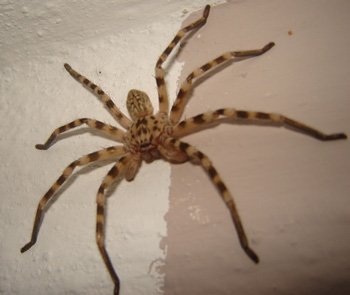
There are well over 50 different species of spiders that are commonly found on the Gold Coast – many of them venomous to some degree.
To understand the danger that spiders represent the people it’s important to know something about their venom. Bites by some spiders can cause death in humans but in reality most spied bites resulting no more than some swelling similar to a feasting. It’s also worth noting that spiders very rarely introduce bacteria into the bloodstream which can cause septicaemia.
Recognising the different species that exist on the Gold Coast is important in knowing when danger exists.
One of the most dangerous spiders that we have in this region is the Northern Rivers Funnelweb spider which mainly inhabits holes in trees and occurs on the northern coast of New South Wales and in the Gold Coast hinterland. They are not commonly found and bites are extremely rare and there is very little data available.
A large and fearsome looking spider is the Mouse Spider which occurs in this area but again is rear. It’s bites are toxic and usually very deep as the fangs are strong and large, and although they are extremely painful they are generally not aggressive unless disturbed.
The Redback Spider seemed to be more prevalent on the Gold Coast number of years ago and it may be that the increase in the number of geckos over recent years has brought about a reduction of the numbers. Nevertheless they are still present in many areas. Adult spiders are generally black with a distinctive red marking which makes them easy to identify, however, variations in colour can occur particularly with juvenile spiders which of light in colour. The male spider is quite small in comparison to the female and therefore the female spiders are responsible for bites on humans. The female producers up to 3 egg sacs each year which may contain as many as 1200 spiderlings. Although they often hide in crevices they generally produce a tangled web which often has leaves of grass stuck to it and so it is possible to determine whether they are present or not even a spider may be out of sight. They are not highly aggressive however they are extremely dangerous. Victim should be quickly given medical aid and a hospital or by calling an ambulance.
The White-Tailed Spider is generally between 12 millimetres and 16 millimetres long from the tip of its head to its tail. The spider is easily recognised by the of white coloured spot which is found on the tip of its tail but it also has two lateral marks which are of white in colour where the abdomen joins the thorax. Great care should be taken when this spider was found in the home as their bite is capable of causing necrosis which can produce severe ulceration and loss of skin in the area of the bite. One of the most disturbing aspects of this spider’s behaviour is that they can get on to ceilings above beds and then drop onto the bed itself thereby posing a serious risk to the occupants of the home. They are commonly found inside homes where they will feed on other spiders and so regular pest control treatments cannot only aid in the eradication of the White-Tailed Spider but by reducing the population of other spiders for this pest to feed on it can significantly reduce the risk of it being found inside homes.
Other less dangerous spiders other black house spider which is also non-aggressive but frequently found in sheds, toilets, windows, and under guttering. Their bites are toxic and can produce extreme pain, nausea and sweating although there have been no reported fatalities.
Most people in the summer come across Huntsman spiders in their house usually at night. They are not usually aggressive and not highly toxic although their bites may be painful. Bites however are rare from this species.
Daddy Long Legs spiders are very common inside homes on the Gold Coast although they are not regarded as dangerous. There is a myth that their venom is very potent however this is untrue and due to the small size of their bodies and mouthparts they usually do not cause risk to humans. Nevertheless they can be annoying as they build webs behind doors, under furniture and around windows.
Not all spiders of course cause problems with humans and are a valuable feature of our environment as they help to keep insect pests under control. In our gardens we frequently come across the St Andrews Cross spider or the giant Golden Orb Weaving Spider both of which produce large webs across shrubs and trees. Neither of these species are toxic.
 (07) 5574 0269
(07) 5574 0269